12 Home Remedies For Dark Inner Thighs And Prevention Tips
We bet you’ll be amazed by the results after using these home remedies for pigmentation.

Image: Midjourney/ StyleCraze Design Team
If you are looking for home remedies for dark inner thighs, you are not alone! Anyone can get dark inner thighs. Be it from constant friction while walking or excess production of melanin, several factors contribute to the development of discoloration of your inner thighs. The good news is that there are natural ways to get rid of dark inner thighs. In this article, we discuss the causes behind dark inner thighs and a few natural remedies to help lighten them. So, scroll down to know how to remove darkness from the inner thighs.
In This Article
Why Are My Inner Thighs So Dark?
Anyone can develop dark inner thighs, regardless of their complexion. One of the main reasons for this is the excess production of melanin, a pigment that gives your skin its tone. Medically, this is referred to as hyperpigmentation (1).
Some factors that can cause your inner thighs to darken are:
- Chafing that may occur while walking with wet or sweaty clothes on
- Medications like chemotherapy drugs or oral hormonal contraceptives
- Dry skin
- Friction on the skin due to tight clothing
- An untreated boil on the inner thigh that may lead to scarring and discoloration
Dark inner thighs may force you to limit your choice of clothing and make you extremely self-conscious and hesitant.
If you are seeking natural alternatives to this problem, we have your back. Listed below are some excellent home remedies that can assist in lightening dark inner thighs.
Here’s how to lighten your inner thighs with natural ingredients.
Key Takeaways
- Dry skin and friction due to tight clothing are a few causes of dark inner thighs.
- Natural ingredients like baking soda, apple cider vinegar, and aloe vera may help reduce skin darkening.
- You can opt for medical treatments like laser therapy or retinoids to treat dark inner thighs.
- Wear breathable clothes and practice thigh toning exercises to help prevent dark inner thighs.
12 Natural Home Remedies For Dark Inner Thighs
1. Baking Soda
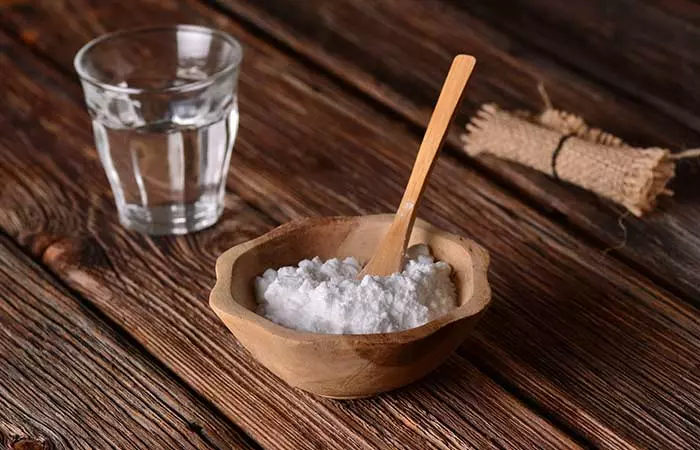
You Will Need
- 1-2 cups of baking soda
- Water
What You Have To Do
- Fill your bath with water and add baking soda to it.
- Allow it to dissolve completely.
- Soak in the baking soda bath for 10-15 minutes.
- Pat your skin dry and apply a moisturizer.
How Often You Should Do This
You may do this once every alternate day.
Why This Works
Baking soda acts as a mild exfoliant on dry and scaly skin. Its alkaline nature can increase the skin’s pH and facilitate the removal of scaly skin (2). This may also help you get rid of dark inner thighs caused by dry skin.
Grace, a beauty YouTuber, uses baking soda with toothpaste and lemon juice to treat her dark inner thighs. She said, “I love this because this gives me a very quick result (i).” She further adds that the toothpaste in the recipe is a drying agent that also helps treat boils on her inner thighs.
2. Apple Cider Vinegar

You Will Need
- 2 tablespoons of organic apple cider vinegar
- 1 tablespoon of water
- Cotton balls
What You Have To Do
- Add two tablespoons of apple cider vinegar to one tablespoon of water.
- Mix well and dip a cotton ball in the mixture.
- Apply the solution to the affected area. Leave it on for 15-20 minutes.
- Rinse it off.
- You can also mix a tablespoon of apple cider vinegar in a glass of water and drink it up daily.
How Often You Should Do This
You may do this once daily.
Why This Works
Dark inner thighs are often caused due to obesity, as a result of mechanical friction (3). Regular consumption of apple cider vinegar can help you lose weight and battle obesity. Its antioxidant property can help fight free radicals to reduce oxidative damage which is known to trigger obesity by stimulating fat deposition (4), (5).
Similar results were seen in a study published in the BMJ Nutrition, Prevention, and Health Journal. It explored the effects of apple cider vinegar on weight, blood sugar, and cholesterol in overweight and obese individuals. Over 12 weeks, 120 participants received different ACV doses or a placebo. Results showed that ACV consumption led to significant weight loss, reduced body fat, and improved blood sugar and cholesterol levels without any harmful side effects (6).
Note: While apple cider vinegar may support weight loss, it is not a standalone solution for obesity. Sustainable weight loss requires a combination of a balanced diet, regular physical activity, and overall healthy lifestyle habits. So, relying solely on ACV without making other dietary and lifestyle changes may not yield significant or lasting results.
3. Aloe Vera

You Will Need
Aloe vera gel (as required)
What You Have To Do
- Take an aloe vera leaf and scrape out its gel.
- Blend the gel using a fork.
- Apply the aloe gel to the affected areas.
- Leave it on for 20-30 minutes and rinse it off.
- Freeze the remaining gel.
How Often You Should Do This
You can do this once daily.
Why This Works
Aloe vera leaf extracts exhibit melanin aggregating effects and can help with skin lightening. A study published in the Planta Medica journal examined the effects of Aloe vera leaf extract and its key active compound, aloin, on the skin pigment cells of tadpoles. It found that aloe vera extract and aloin caused the skin pigment in these cells to clump together, leading to skin-lightening (7). Due to this, aloe vera may be an effective treatment for excess inner thigh pigmentation.
4. Lemon Juice

You Will Need
- ½ lemon
- Cotton pads
What You Have To Do
- Squeeze out the juice from half a lemon.
- Apply the juice to the affected area with a cotton pad. If you have sensitive skin, dilute the lemon juice with an equal volume of water.
- Leave it on for 20-30 minutes and rinse it off with water.
How Often You Should Do This
You may do this once daily.
Why This Works
Lemon juice is a rich source of vitamin C (ascorbic acid) – a natural skin lightening agent.
Vitamin C can help treat dark inner thighs by decreasing melanin synthesis in the affected area (8). This can promote a more even skin tone and lighten hyperpigmented spots over time. Additionally, lemon juice has natural exfoliating properties due to its citric acid content (9), (10). Due to this, it may help remove dead skin cells, further enhancing the skin’s brightness.
 Quick Tip
Quick Tip5. Coconut Oil

You Will Need
1 tablespoon of virgin coconut oil
What You Have To Do
- Apply virgin coconut oil gently to the affected area.
- Leave it on until it dries.
How Often You Should Do This
You may do this 1-2 times daily.
Why This Works
The moisturizing and soothing property of coconut oil exhibits protective effects on the skin (11). It can also help with moisturization of dry and chafed skin, which can cause your inner thighs to become dark.
6. Turmeric
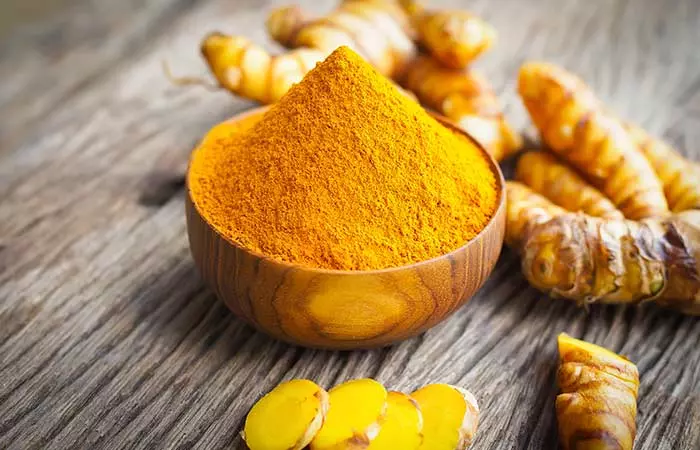
You Will Need
- 1 teaspoon of turmeric powder
- A few drops of water
What You Have To Do
- Add a few drops of water to a teaspoon of turmeric powder.
- Mix well to form a paste.
- Apply the paste to the affected area.
- Leave it on for 20-30 minutes.
- Rinse it off with water.
How Often You Should Do This
You may do this once daily.
Why This Works
Curcumin, the active component of turmeric, can inhibit melanogenesis (production of melanin) and lighten dark inner thighs (12).
A 2025 study published in the International Journal of Molecular Science demonstrated curcumin’s and its analogs’ capacity to prevent the synthesis of melanin in human melanocytes derived from a darkly pigmented donor. Melanin is produced by the enzyme tyrosinase, and if its activity is suppressed, there is less or no melanin present in cells.
The following graph shows the potential of CMC2.23 (chemically modified curcumin compound 2.23) to inhibit the enzymatic activity of tyrosinase in cells. The activity is suppressed in direct proportion to the concentration of CMC2.23 increases in the cells.

Cellular Tyrosinase Activity Cells Treated With CMC2.23
Source: Novel Chemically Modified Curcumin (CMC) Analogs Exhibit Anti-Melanogenic Activity in Primary Human Melanocytes7. Cucumber

You Will Need
- ½ cucumber
- A blender
What You Have To Do
- Take a refrigerated cucumber and cut it into half.
- Blend one half of the cucumber.
- Apply the cucumber paste to the affected skin.
- Leave it on for 20-30 minutes.
- Rinse it off with water.
- You can also consume cucumber daily.
How Often You Should Do This
Do this once daily.
Why This Works
Cucumber soothes your skin and can help reduce skin irritation and swelling (13). If your dark inner thighs are a result of constant chafing or dry skin, cucumbers are your best bet.
8. Sugar Scrub
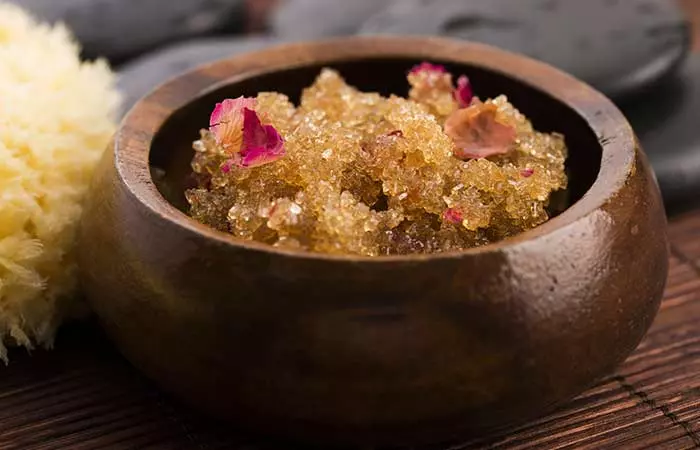
You Will Need
- 1 tablespoon of granulated sugar
- 1 tablespoon of coconut oil
What You Have To Do
- Add a tablespoon of coconut oil to a tablespoon of granulated sugar.
- Mix well and use the sugar scrub for gentle exfoliation.
- Do this for a minute or two and rinse it off with water.
How Often You Should Do This
You can do this 2-3 times a week.
Why This Works
Sugar scrubs help in exfoliating your skin. It helps in getting rid of dead skin cells that may have accumulated in your inner thighs and caused darkening in the area.
Note: While this remedy can help exfoliate the skin and remove dead cells, excessive scrubbing may cause irritation, redness, or sensitivity, especially in delicate areas like the inner thighs. Always use gentle circular motions and avoid scrubbing if you have cuts, rashes, or sensitive skin. Follow up with a moisturizer to keep the skin hydrated and protected.
9. Yogurt
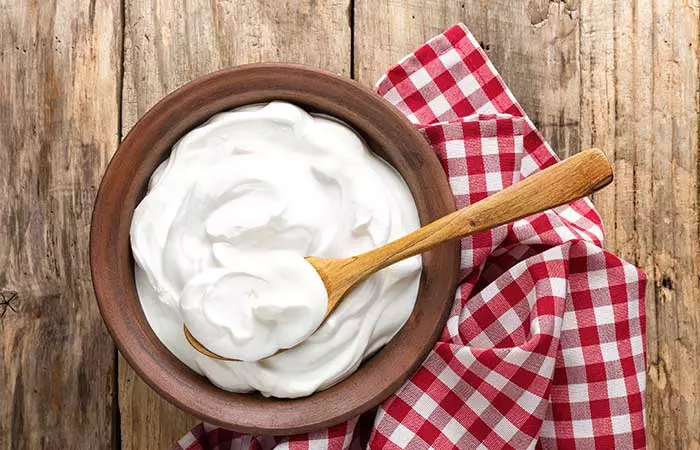
You Will Need
1 tablespoon of yogurt
What You Have To Do
- Apply yogurt to the affected area.
- Leave it on for 20-30 minutes and rinse it off with water.
- You can also consume a small bowl of yogurt daily for additional benefits.
How Often You Should Do This
You may do this one time daily.
Why This Works
Yogurt is a good source of a compound called L-cysteine. This compound is a skin lightening agent that may also help in getting rid of dark inner thighs. Research suggests that high amounts of L-cysteine can reduce the activity of tyrosinase, an enzyme involved in melanin production. It can also increase the production of pheomelanin, which is a lighter pigment in the skin. However, despite these claims, no strong scientific evidence proves that L-cysteine peptide is truly effective (14).
10. Oatmeal

You Will Need
- 1 tablespoon of powdered oatmeal
- Water (as required)
What You Have To Do
- Take a tablespoon of powdered oatmeal and add a little water to it.
- Mix well to form a thick paste.
- Apply the paste to the affected skin.
- Leave it on for 20-30 minutes and rinse it off with water.
How Often You Should Do This
You may do this once daily or every alternate day.
Why This Works
Oatmeal has various benefits for your skin. It can protect your skin against ultraviolet damage and can also prevent it from drying (15). Thus, it may lighten dark inner thighs caused due to dry skin or overexposure to the sun. Oatmeal also has anti-inflammatory properties (15). So, if your dark inner thighs are a result of constant chafing and the inflammation that comes with it, this remedy may help.
11. Almond Oil

You Will Need
- Almond oil (as required)
What You Have To Do
- Take some almond oil on your fingers and gently apply it to the affected area.
- Leave it on until it dries.
How Often You Should Do This
You may do this 1-2 times daily.
Why This Works
Almond oil has been used for ages to treat dry skin due to its emollient properties. These activities also help in improving skin tone and complexion, which makes almond oil a suitable remedy to get rid of dark inner thighs (16).
12. Lactic Acid
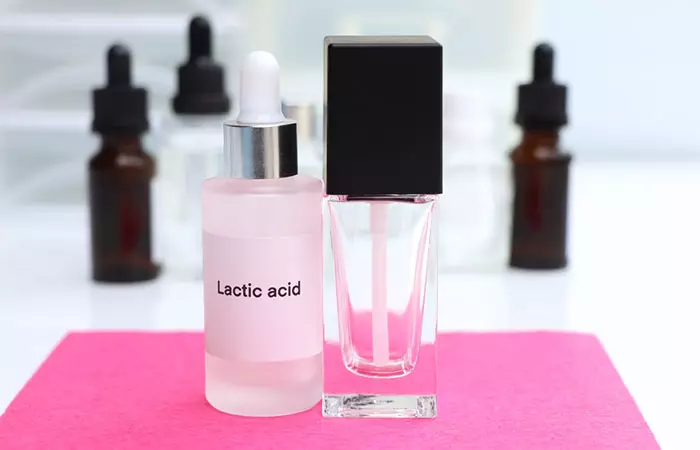
You Will Need
- Lactic acid serum (12% formulation)
What You Have To Do
- Clean your skin and pat it dry.
- Gently massage 2-3 drops of lactic acid serum on your inner thighs.
- Leave it on your skin till it gets absorbed.
- Apply a gentle moisturizer.
How Often You Should Do This
You may do this twice daily
Why This Works
Lactic acid may help brighten pigmentation caused by friction and pigmentation disorders such as melasma (17), (18). Hence, lactic acid may be an effective remedy for dark inner thighs. Additionally, lactic acid works as a gentle exfoliant, removing dead skin cells from the surface and promoting the growth of new, healthy skin. This may further help treat uneven skin tone and darkened areas (19).
Note: Ensure that you conduct a patch test to check for any adverse reactions before incorporating a lactic acid serum into your skincare routine.
Brian Clark, BSN, MSNA, Certified Registered Nurse Anesthetist (CRNA) suggests another remedy, “Lemon and coconut scrub, for instance, has vitamin C, which is abundant in lemons, and may be used to alleviate hyperpigmentation. To make a coconut oil and lemon juice scrub, combine a few tablespoons of coconut oil with the juice of half a lemon and gently rub it on the affected area. After a gentle massage lasting 10 minutes or longer, wash the area clean. Coconut oil can be used as a moisturizer and may help keep your thighs soft and supple.”
These remedies will undoubtedly do an excellent job of treating dark inner thighs. You may also try using ingredients like rose water, tea tree oil, gram flour, olive oil, shea butter, cocoa butter, vitamin E oil, and potato juice to help lighten your inner thighs. Ensure that you do a patch test or consult a doctor before using these ingredients.
If you are looking for treatment options other than these home remedies for dark inner thighs, there are many over-the-counter (OTC) formulations to treat hyperpigmentation.
OTC And Prescription Treatments
Many OTC treatments can help in lightening your dark inner thighs. Many of these formulations contain active ingredients like hydroquinone and tretinoin, which help by reducing melanin production or speeding up skin cell turnover, thus lessening pigmentation (20). You may also try formulations that are based on natural ingredients, like:
- Soy
- Niacinamide
- Ellagic acid
- Lignin peroxidase
These ingredients do not have any side effects.
Arbutin, kojic acid, and licorice are other natural ingredients that may help with pigmentation. However, the OTC ointments containing these compounds may show some side effects like increased sensitivity and peeling of the skin (21).
Always consult a dermatologist before trying these. Depending on the severity of pigmentation, they may also suggest laser treatments.
 Quick Tip
Quick TipThese treatments should address most of your issues related to hyperpigmentation and dark inner thighs. Additionally, here are some amazing tips that can help prevent hyperpigmentation in your inner thighs.
How To Prevent Dark Inner Thighs
- Wear bicycle or nylon shorts to prevent chafing.
- Keep the affected area clean and dry.
- Exfoliate the affected area regularly.
- Wear loose and breathable clothing when the weather is hot and humid.
- Avoid shaving/waxing in the affected area to prevent further irritation.
- Always wear sunscreen with SPF 40 or higher whenever you venture out.
- Tone your thighs by following a healthy diet and doing regular exercise such as squats and reverse lunges and yoga poses such as garudasana and natarajasana.
- Add note on thigh toning exercises and yoga
Following these tips regularly can reduce your chances of getting hyperpigmentation on your inner thighs to a great extent.
Josh Sim, an aesthetic consultant, says, “If you would like to lighten the area, there are a few options you could try:
Moisturize The Area: Using a moisturizing cream or lotion on your inner thighs can help to keep the skin hydrated and prevent irritation and darkening from friction or dryness.
In regard to this, a study revealed that hyperpigmentation progression decreased to a considerable level, following the application of tretinoin lotion. Out of 39% of the population affected by hyperpigmentation, it was found that 73% reported no pigmentation after 12 weeks of applying a tretinoin lotion. Hence, it was deemed that tretinoin lotion can help reduce hyperpigmentation on skin.
You can also use a barrier product like Vaseline to help lock in moisture and protect the skin in this area. Apply a thin layer on top of the pigmented skin either on its own or after using a moisturizing product to help it soak in.
Exfoliate The Skin: Gently exfoliating the skin on your inner thighs can help remove dead skin cells and improve the tone and texture of the skin, which can also lighten the discoloration.
Use Brightening Creams: There are creams and serums that contain ingredients like glycolic acid or kojic acid, which can help brighten the skin and improve its appearance through gentle chemical exfoliation and reduce pigmentation in dry patches of skin.”
Certain factors may put you at a higher risk of developing dark inner thighs. They are as follows.
Risk Factors
The factors that may increase your chances of getting dark inner thighs are (1), (22):
- Obesity – It increases the risk of chafing.
- Hormonal imbalance
- Certain medical conditions like diabetes or acanthosis nigricansi A widespread skin pigmentation condition characterized by thick, velvety areas of dark, patchy skin.
- Occupations that require you to stay out in the sun for long periods
Infographic: Lesser-Known Facts About Dark Inner Thighs
Dark inner thighs are quite common and are curable. However, they make us feel uncomfortable and even influence our choice of clothing. The best way to get rid of them is to understand the condition deeply, identify the exact cause, consult the doctor and follow necessary treatment accordingly. The following infographic gives you an overview of certain lesser-known causes and treatments of this condition. Take a look! Illustration: StyleCraze Design Team
Anyone can experience dark inner thighs. They occur due to constant friction or excess melanin production. But some natural methods help get rid of dark inner thighs. The home remedies for dark inner thighs mentioned above may help lighten the hyperpigmented area irrespective of one’s skin tone. Baking soda, apple cider vinegar, aloe vera, lemon juice, coconut oil, and turmeric are some remedies that help improve this condition. So, that was how to get rid of dark inner thighs with OTCs and home remedies. With that said, consult your doctor if you see no improvement even after trying these remedies.
Frequently Asked Questions
Why are my inner thighs itchy?
Your inner thighs can get itchy for many reasons. Jock’s itchi A fungal infection that appears as a warm, itchy rash and sometimes takes the form of a ring on the body. and fungal infections are the main causes of itchy inner thighs. Chafing may also be one of the causes.
Why do the inner thighs get dark?
One of the leading causes of dark inner thighs is hyperpigmentation. Other factors like chafing, certain medications, hormonal imbalances, and increased sun exposure can also contribute to dark inner thighs.
Does shaving underarms make it dark?
Shaving your underarms don’t make them dark. However, it will give an impression of darker underarms as it results in the formation of an unsightly stubble as the hair in the underarms grows back.
Can waxing cause dark underarms?
No, waxing doesn’t darken your underarms. It is better than shaving as your hair will not grow back in a stubble. Instead, it will grow thinner and will be less evident.
Will losing weight help with dark inner thighs?
Maintaining a healthy weight may help prevent the development of dark inner thighs and also help fade the darkness in the region.
Can Vaseline lighten dark inner thighs?
Anecdotal evidence suggests that Vaseline can reduce friction and repair damaged skin, reducing darkness on the inner thighs.
What does inner thigh chafing look like?
Inner thigh chafing looks like red, blister-like lesions on your skin.
How do you get rid of chafed thighs overnight?
Avoiding contact with the affected area, using scented soaps or other skin care products, and applying restorative ointment at night may help treat chafed thighs overnight.
Illustration: Proven Health Benefits Of Red Grapes + Nutritional Value

Image: Stable Diffusion/StyleCraze Design Team
Learn from the below video about the causes, home remedies, prevention, and treatment of dark inner thighs. Get expert advice on how to lighten them and keep them healthy.
Personal Experience: Source
StyleCraze's articles are interwoven with authentic personal narratives that provide depth and resonance to our content. Below are the sources of the personal accounts referenced in this article.
(i) How to lighten dark inner thighs fast and effective, naturally.https://www.youtube.com/watch?v=er57cnaw7NM
References
Articles on StyleCraze are backed by verified information from peer-reviewed and academic research papers, reputed organizations, research institutions, and medical associations to ensure accuracy and relevance. Read our editorial policy to learn more.
- “Postinflammatory Hyperpigmentation” StatPearls, US National Library Of Medicine.
- “Scaly skin and bath pH: Rediscovering baking soda” Journal Of The American Academy Of Dermatology.
- “The Link Between Obesity and the Skin” US National Library Of Medicine.
- “Apple Cider Vinegar Attenuates Oxidative Stress and Reduces the Risk of Obesity in High-Fat-Fed Male Wistar Rats.” Journal of Medicinal Food, US National Library Of Medicine.
- “Obesity, Oxidative Stress, Adipose Tissue Dysfunction, and the Associated Health Risks: Causes and Therapeutic Strategies” US National Library Of Medicine.
- “Apple cider vinegar for weight management in Lebanese adolescents and young adults with overweight and obesity: a randomised, double-blind, placebo-controlled study” US National Library Of Medicine.
- “On the novel action of melanolysis by a leaf extract of Aloe vera and its active ingredient aloin, potent skin depigmenting agents.” Planta Medica, US National Library Of Medicine.
- “The Roles of Vitamin C in Skin Health” Nutrients, US National Library Of Medicine.
- “Quantitative Assessment of Citric Acid in Lemon Juice, Lime Juice, and Commercially-Available Fruit Juice Products” US National Library Of Medicine.
- “A Comprehensive Bibliographic Review Concerning the Efficacy of Organic Acids for Chemical Peels Treating Acne Vulgaris” US National Library Of Medicine.
- “In vitro anti-inflammatory and skin protective properties of Virgin coconut oil” Journal Of Traditional And Complementary Medicine, US National Library Of Medicine.
- “Curcumin inhibits melanogenesis in human melanocytes.” Phytotherapy Research, US National Library Of Medicine.
- “Phytochemical and therapeutic potential of cucumber.” Fitoterapia, US National Library Of Medicine.
- “Systemic skin whitening/lightening agents: What is the evidence?” Indian Journal Of Dermatology, Venereology, And Leprology, US National Library Of Medicine.
- “Oatmeal in dermatology: a brief review” Indian Journal Of Dermatology, Venereology, And Leprology, US National Library Of Medicine.
- “The uses and properties of almond oil.” Complementary Therapies in Clinical Practice, US National Library Of Medicine.
- ” Epidermal and dermal effects of topical lactic acid.” Journal of the American Academy of Dermatology, US National Library Of Medicine.
- “Treatment of Melasma With 88% Lactic Acid versus 30% Salicylic Acid Peels, a Split Face Study.” THE IRAQI POSTGRADUATE MEDICAL JOURNAL, Iraqi Academic Scientific Journal.
- “Lactic Acid Chemical Peeling in Skin Disorders” US National Library Of Medicine.
- “Abnormally dark or light skin” MedlinePlus.
- “Arbutin as a Skin Depigmenting Agent with Antimelanogenic and Antioxidant Properties” US National Library Of Medicine.
- “Acanthosis Nigricans” US National Library Of Medicine.
Read full bio of Dr. Sameeksha Chand
- Brian Clark, BSN, MSNA, is a Certified Registered Nurse Anesthetist (CRNA) with 13 years of experience. She is the founder of United Medical Education and has a master's degree from Wolford College.
 Brian Clark, BSN, MSNA, is a Certified Registered Nurse Anesthetist (CRNA) with 13 years of experience. She is the founder of United Medical Education and has a master's degree from Wolford College.
Brian Clark, BSN, MSNA, is a Certified Registered Nurse Anesthetist (CRNA) with 13 years of experience. She is the founder of United Medical Education and has a master's degree from Wolford College. - Josh is an aesthetic consultant with over 2 years of experience. He specializes in preventative aging and is a certified Thermage® practitioner. He helps clients deal with issues related to aging, acne, scarring, redness, dark spots, and dryness through a mix of technology and botanical actives.
 Josh is an aesthetic consultant with over 2 years of experience. He specializes in preventative aging and is a certified Thermage® practitioner. He helps clients deal with issues related to aging, acne, scarring, redness, dark spots, and dryness through a mix of technology and botanical actives.
Josh is an aesthetic consultant with over 2 years of experience. He specializes in preventative aging and is a certified Thermage® practitioner. He helps clients deal with issues related to aging, acne, scarring, redness, dark spots, and dryness through a mix of technology and botanical actives.
Read full bio of Shaheen Naser
Read full bio of Anjali Sayee
Read full bio of Monomita Chakraborty






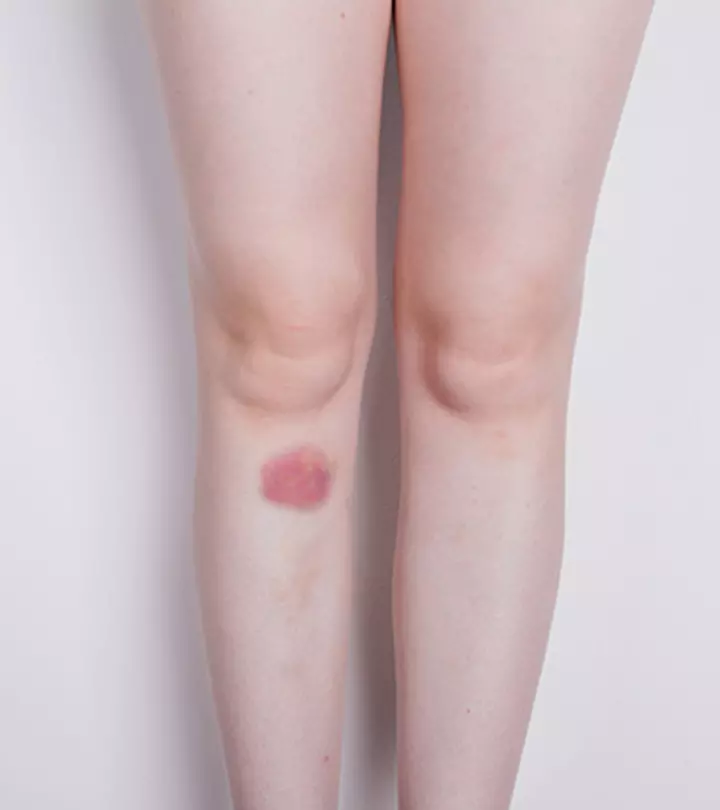

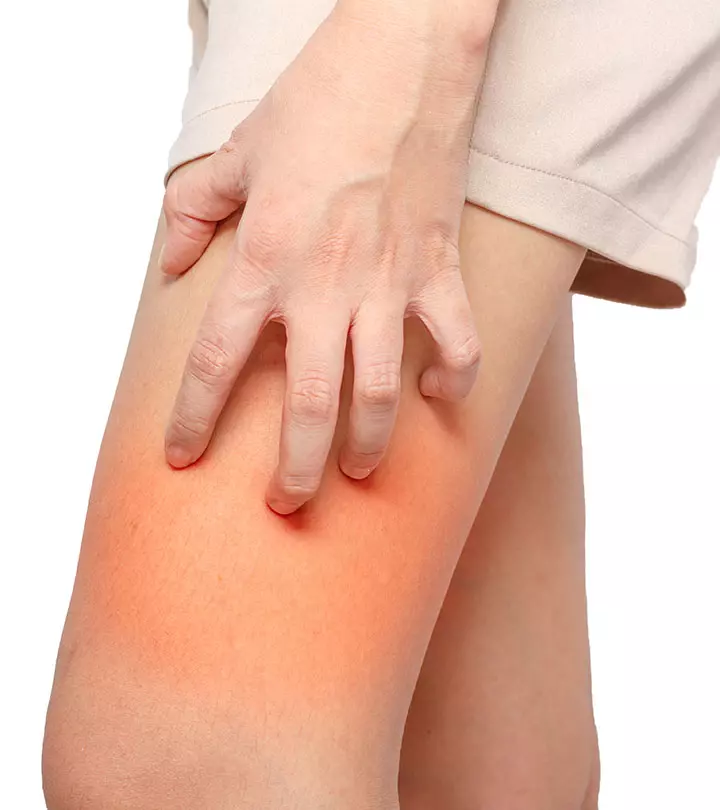










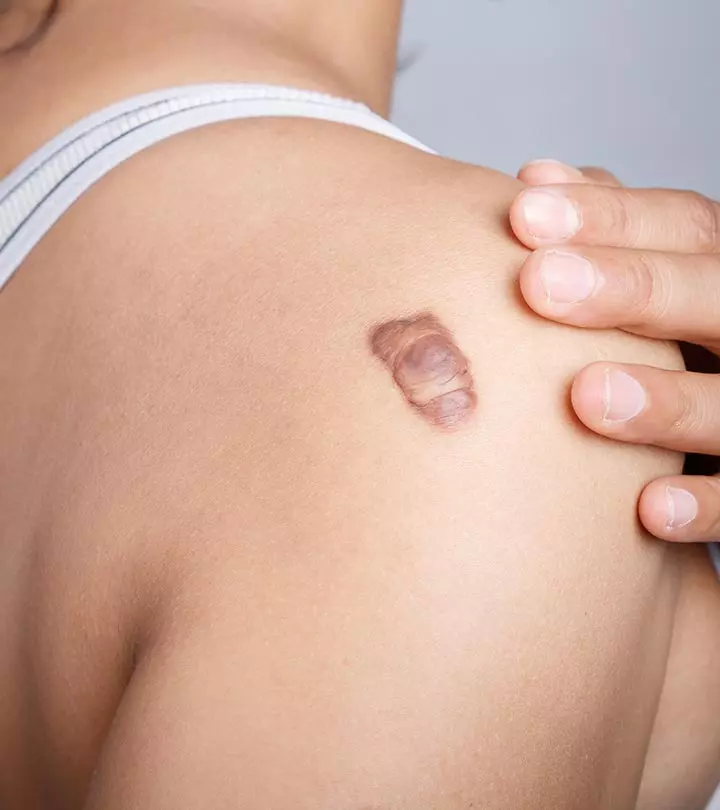



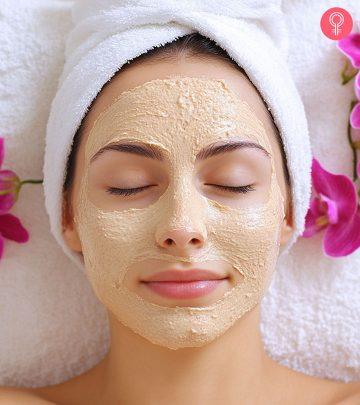

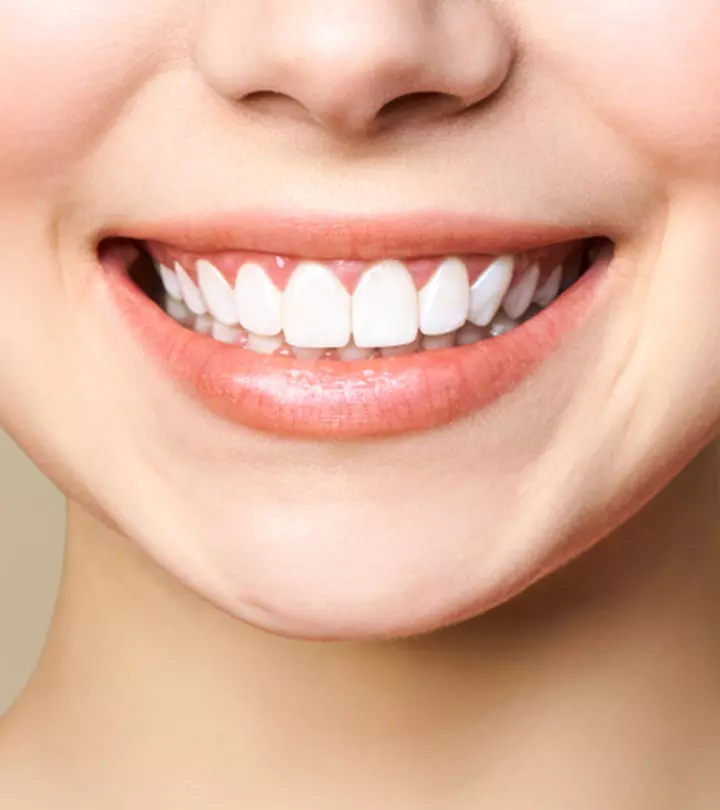
Community Experiences
Join the conversation and become a part of our empowering community! Share your stories, experiences, and insights to connect with other beauty, lifestyle, and health enthusiasts.